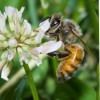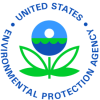 Protecting honey bees and other pollinators from pesticide impacts is important to the sustainability of agriculture. Consequently, pesticide applicators must determine if there is a clear hazard to managed or wild populations of bees. Potential exposure of bees to pesticides can vary greatly depending on the type of pesticide, formulation, application method, label restrictions, and other factors. The goal in using a pesticide is to achieve maximum benefit (success) with minimum negative impact, and these factors should always be considered in pesticide selection. This publication is written (1) to help assure the sustainability of both bees and agriculture by informing beekeepers, pesticide users, and the general public about the often complex relationship between pollinators (specifically bees) and pesticides, (2) to offer guidance for improved communication between beekeepers and pesticide users, (3) to offer pollinator risk-reducing strategies for growers and other applicators when using pesticides, and (4) to provide clarity in laws, labeling, and associated definitions. This 14-page fact sheet was written by J. D. Ellis, J. Klopchin, E. Buss, F. M. Fishel, W. H. Kern, C. Mannion, E. McAvoy, L. S. Osborne, M. Rogers, M. Sanford, H. Smith, P. Stansly, L. Stelinski, and S. Webb, and published by the UF Department of Entomology and Nematology, March 2014.
Protecting honey bees and other pollinators from pesticide impacts is important to the sustainability of agriculture. Consequently, pesticide applicators must determine if there is a clear hazard to managed or wild populations of bees. Potential exposure of bees to pesticides can vary greatly depending on the type of pesticide, formulation, application method, label restrictions, and other factors. The goal in using a pesticide is to achieve maximum benefit (success) with minimum negative impact, and these factors should always be considered in pesticide selection. This publication is written (1) to help assure the sustainability of both bees and agriculture by informing beekeepers, pesticide users, and the general public about the often complex relationship between pollinators (specifically bees) and pesticides, (2) to offer guidance for improved communication between beekeepers and pesticide users, (3) to offer pollinator risk-reducing strategies for growers and other applicators when using pesticides, and (4) to provide clarity in laws, labeling, and associated definitions. This 14-page fact sheet was written by J. D. Ellis, J. Klopchin, E. Buss, F. M. Fishel, W. H. Kern, C. Mannion, E. McAvoy, L. S. Osborne, M. Rogers, M. Sanford, H. Smith, P. Stansly, L. Stelinski, and S. Webb, and published by the UF Department of Entomology and Nematology, March 2014.
http://edis.ifas.ufl.edu/in1027
Tag: Pesticide Regulations and Safety
The Importance of Keeping Pesticide Records (PI246)
 Keeping accurate records of pesticide use makes good sense. In some cases, you are required by law to maintain records on pesticide use, but having records available can also help you improve your operation. This 8-page fact sheet outlines who is required to keep records of pesticide use and the appropriate contents. Written by F. M. Fishel, and published by the UF Department of Agronomy, May 2013.
Keeping accurate records of pesticide use makes good sense. In some cases, you are required by law to maintain records on pesticide use, but having records available can also help you improve your operation. This 8-page fact sheet outlines who is required to keep records of pesticide use and the appropriate contents. Written by F. M. Fishel, and published by the UF Department of Agronomy, May 2013.
http://edis.ifas.ufl.edu/pi246
The EPA Conventional Reduced Risk Pesticide Program (PI224)
 The Food Quality Protection Act (FQPA) of 1996 initiated the U.S. Environmental Protection Agency’s (EPA) Conventional Reduced Risk Pesticide Program. Its purpose is to expedite the review and registration process of conventional pesticides that pose less risk to human health and the environment than existing conventional alternatives. Riskier conventional alternatives are those pesticides EPA deems as having neurotoxic, carcinogenic, reproductive, and developmental toxicity, or groundwater contamination effects. It serves as a means to ensure that reduced risk pesticides enter the channels of trade and are available to growers as soon as possible. This 11-page fact sheet was written by F.M. Fishel, and published by the UF Department of Agronomy, April 2013.
The Food Quality Protection Act (FQPA) of 1996 initiated the U.S. Environmental Protection Agency’s (EPA) Conventional Reduced Risk Pesticide Program. Its purpose is to expedite the review and registration process of conventional pesticides that pose less risk to human health and the environment than existing conventional alternatives. Riskier conventional alternatives are those pesticides EPA deems as having neurotoxic, carcinogenic, reproductive, and developmental toxicity, or groundwater contamination effects. It serves as a means to ensure that reduced risk pesticides enter the channels of trade and are available to growers as soon as possible. This 11-page fact sheet was written by F.M. Fishel, and published by the UF Department of Agronomy, April 2013.
http://edis.ifas.ufl.edu/pi224
Children and Pesticides (PI226)
 Children act fast, but so do poisons, including pesticides. Fortunately for most parents, their children are not harmed when the parents have a momentary lapse and aren’t supervising them for a short time. But how would parents respond if they suddenly turn around, and their toddler is holding a can of household aerosol insect killer? This 3-page fact sheet outlines some facts and precautionary measures regarding children and pesticides in the home environment, so parents have a better idea of how to keep harmful chemical products away from their children. Written by F.M. Fishel, and published by the UF Department of Agronomy, March 2013.
Children act fast, but so do poisons, including pesticides. Fortunately for most parents, their children are not harmed when the parents have a momentary lapse and aren’t supervising them for a short time. But how would parents respond if they suddenly turn around, and their toddler is holding a can of household aerosol insect killer? This 3-page fact sheet outlines some facts and precautionary measures regarding children and pesticides in the home environment, so parents have a better idea of how to keep harmful chemical products away from their children. Written by F.M. Fishel, and published by the UF Department of Agronomy, March 2013.
http://edis.ifas.ufl.edu/pi226
PI232 Managing Pesticide Drift
PI232, a 17-page illustrated guide by F. M. Fishel and J. A. Ferrell, discusses factors influencing drift and provides
common-sense solutions for minimizing potential drift problems. Published by the UF Department of Agronomy, September 2010.
http://edis.ifas.ufl.edu/pi232
PI230 Is Our Food Safe from Pesticides?
PI230, a 5-page illustrated fact sheet by Frederick M. Fishel, describes the integrated pest management practices followed by growers of our food supply, how tolerances for pesticides in foods are determined by the EPA, and how annual testing of commodity samples for pesticides is conducted. Published by the UF Department of Agronomy, June 2010.
http://edis.ifas.ufl.edu/pi230
PI81/PI118 Protecting Your Pet from Pesticides
PI81, a 3-page fact sheet by Frederick M. Fishel, explains precautionary measures that can be used to protect pets from injury due to pesticides used in and around the home. Includes references. Published by the UF Department of Agronomy, May 2010.
http://edis.ifas.ufl.edu/pi118
PI228 EPA’s Safety Measures for Aluminum and Magnesium Phosphide Fumigants
PI228, a 2-page illustrated fact sheet by F.M. Fishel, outlines new EPA restrictions on aluminum and magnesium phosphide products used to control burrowing rodents. Includes references. Published by the UF Department of Agronomy, May 2010.
http://edis.ifas.ufl.edu/pi228
PI226 Children and Pesticides
PI226, a 3-page illustrated fact sheet by F.M. Fishel, outlines some facts and basic precautionary measures regarding children and pesticides in the home environment. Includes references. Published by the UF Department of Agronomy, March 2010.
http://edis.ifas.ufl.edu/pi226
PI227 EPA’s Endocrine Disruptor Screening Program (EDSP)
PI227, a 4-page fact sheet by F.M. Fishel, discusses EPA’s screening program for potential effects to the
endocrine system caused by pesticide exposure. Includes references. Published by the UF Department of Agronomy, April 2010.
http://edis.ifas.ufl.edu/pi227
PI223 Pesticide Fires
PI223, a 6-page illustrated fact sheet by Frederick M. Fishel, introduces the potential problems associated with pesticide fires, precautions to take, what to do if a fire occurs, and a table to decode the numbers on the diamond-shaped National Fire Protection Association warning symbol. Includes form for pre-fire plan and references. Published by the UF Department of Agronomy, October 2009.
http://edis.ifas.ufl.edu/PI223
PI221 Pesticides and Cholinesterase
PI221, a 4-page fact sheet by Frederick M. Fishel, describes cholinesterase, as well as how several pesticides in different pesticide families can affect cholinesterase levels in humans, and the importance of timely monitoring of cholinesterase levels for any who handle organophosphate or carbamate pesticides, which inhibit cholinesterase. Includes references. Published by the UF Department of Agronomy, October 2009.
http://edis.ifas.ufl.edu/PI221
PI1/PI001 Protecting Water Resources from Agricultural Pesticides
Revised! PI-1, a 5-page illustrated fact sheet by O. Norman Nesheim and Frederick M. Fishel, describes practices that help protect groundwater and surface water from pesticide contamination. Includes references. Published by the UF Department of Agronomy, April 2009.
http://edis.ifas.ufl.edu/PI001
PI176/PI212 Professionalism and Pesticides: Supervision
PI-176, a 2-page illustrated fact sheet by F. M. Fishel, describes the extent of supervision required by law in Florida for various types of licenses and pesticide label restrictions. Includes references. Published by the UF Department of Agronomy, January 2009.
http://edis.ifas.ufl.edu/PI212
PI174/PI210 The Global Increase in Counterfeit Pesticides
PI-174, an 8-page illustrated fact sheet by Frederick M. Fishel, describes the growing problem of illegal manufacture and trade of counterfeit pesticides, types of counterfeit and illegal pesticides, effects of illegal trade and counterfeit pesticides, challenges to fighting the problem, steps that need to be taken, and examples. Includes references. Published by the UF Department of Agronomy, January 2009.
http://edis.ifas.ufl.edu/PI210
PI-168 /PI204 Safety Systems for Working with Pesticides
PI-168, a 3-page illustrated fact sheet by Frederick Fishel, provides a description of the following pesticide safety systems: closed mixing and loading systems, enclosed cabs, and containment
systems. Published by the UF Department of Agronomy, August 2008.
http://edis.ifas.ufl.edu/PI204